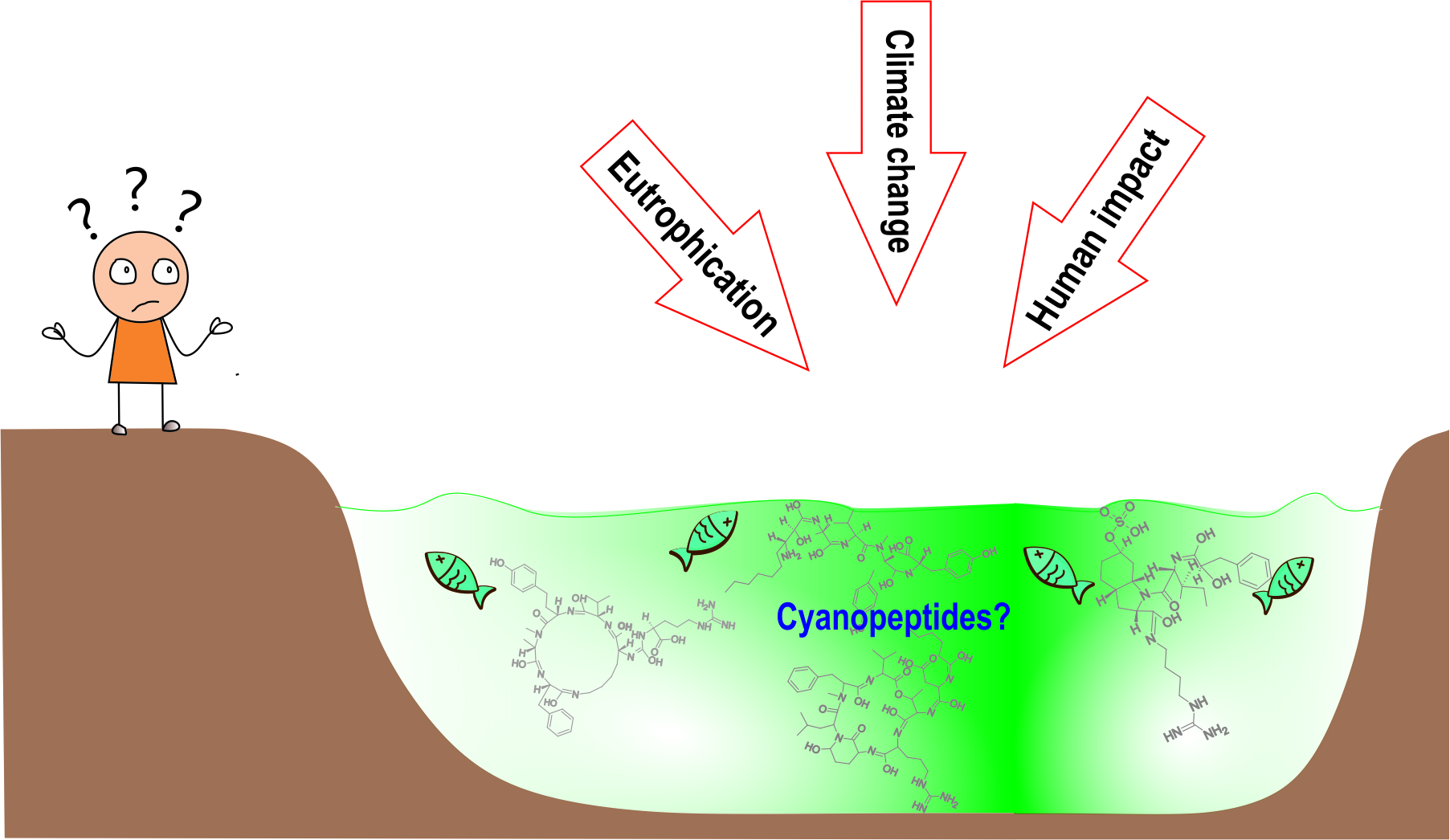Man-made shallow fishponds in the Czech Republic have been facing a high eutrophication since 1950s. Anthropogenic eutrophication and feeding of fish have strongly affected the physico-chemical properties of water and its aquatic community composition leading to harmful algal bloom formation. In our current study, we have characterised the phytoplankton community across three hypertrophic ponds to assess the phytoplankton dynamics during the vegetation season. We microscopically identified and quantified 29 cyanobacterial taxa comprised of non-toxigenic and toxigenic species. Further, a detailed cyanopeptides (CNPs) profiling was performed using molecular networking analysis of liquid chromatography tandem mass spectrometry (LC–MS/MS) data coupled with dereplication strategy. This MS networking approach coupled with dereplication on online global natural product social networking (GNPS) web platform led us to putatively identify forty CNPs: fourteen anabaenopeptins, ten microcystins, five cyanopeptolins, six microginins, two cyanobactins, a dipeptide radiosumin, a cyclooctapeptide planktocyclin and epidolastatin12. We have applied the binary logistic regression to estimate the CNPs producer by correlating the GNPS data with the species abundance. Usage of The combination of molecular networking and dereplication on online global natural product social networking (GNPS) web platform has proved as a valuable approach for rapid and simultaneous detection of high number of peptides, and rapidly assessing the risk for harmful bloom.

